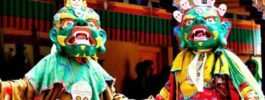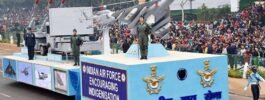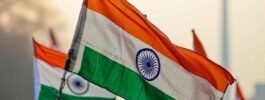India’s Republic Day Parade: A Spectacular Display of Unity and Diversity
India’s Republic Day Parade is a grand celebration of the country’s rich cultural heritage, military prowess, and unity in diversity. Held annually on January 26th, the parade showcases the nation’s achievements and pays tribute to its history and diversity. The event takes place in the heart of New Delhi, along the Rajpath, a historic ceremonial boulevard that stretches from the Rashtrapati Bhavan (President’s residence) to India Gate.
Cultural Tableaux: A Kaleidoscope of India’s Diversity
One of the key highlights of the Republic Day Parade is the cultural tableaux that represent the diverse states and union territories of India. These intricately designed floats showcase the unique cultural heritage, traditions, art, and craft of different regions of the country. Each tableau is a visual treat, depicting the vibrant colors, music, dance forms, and architectural marvels that make India a land of varied cultures and traditions.
The cultural tableaux offer a glimpse into the rich tapestry of India’s cultural mosaic, highlighting the unity in diversity that is the essence of the country. From the colorful festivals of Rajasthan to the serene backwaters of Kerala, from the majestic monuments of Delhi to the tribal art forms of Northeast India, the tableaux capture the essence of India’s cultural heritage in all its glory.
Military Displays: A Showcase of Strength and Discipline
Another key feature of the Republic Day Parade is the impressive display of India’s military might. The parade begins with the unfurling of the national flag and the singing of the national anthem, followed by a grand march-past by the three branches of the Indian Armed Forces – the Army, Navy, and Air Force. The precision and discipline displayed by the marching contingents, accompanied by stirring martial music, evoke a sense of pride and patriotism among the spectators.
The military displays also include a spectacular flypast by the Indian Air Force, featuring fighter jets, transport aircraft, and helicopters performing breathtaking aerial maneuvers. The display of tanks, missile systems, and other military hardware showcases India’s defense capabilities and readiness to protect its sovereignty and territorial integrity.
Performances: A Tribute to India’s Cultural Heritage
In addition to the cultural tableaux and military displays, the Republic Day Parade features vibrant performances by school children, folk artists, and dance troupes from across the country. These performances celebrate India’s rich cultural heritage through music, dance, and theatrical presentations that reflect the diversity and pluralism of the nation.
The colorful performances showcase a mix of traditional and contemporary art forms, ranging from classical dances like Bharatanatyam and Kathak to folk dances like Bhangra and Garba. The rhythmic beats of drums, the graceful movements of dancers, and the melodious tunes of traditional instruments create a mesmerizing spectacle that captivates the audience and fills the air with a sense of joy and celebration.
The President’s Role: Chief Guest and Guardian of the Constitution
One of the most significant aspects of the Republic Day Parade is the presence of the President of India as the chief guest of the event. The President, who is the ceremonial head of the state, plays a pivotal role in the parade, symbolizing the unity and sovereignty of the nation.
As the supreme commander of the Indian Armed Forces, the President takes the salute during the march-past and reviews the parade along with other dignitaries. The President’s participation in the Republic Day Parade reaffirms the constitutional principles of democracy, secularism, and social justice enshrined in the Indian Constitution.
The Republic Day Parade is not just a ceremonial event but a reflection of India’s ethos, values, and aspirations. It celebrates the country’s journey towards freedom, democracy, and development, while honoring its rich cultural heritage and diversity. The parade serves as a reminder of the sacrifices made by the freedom fighters and the commitment of the people to uphold the ideals of the Indian Republic. It is a moment of pride and patriotism that unites the nation in a spirit of camaraderie and solidarity, reaffirming the motto of “Unity in Diversity” that defines the essence of India.







